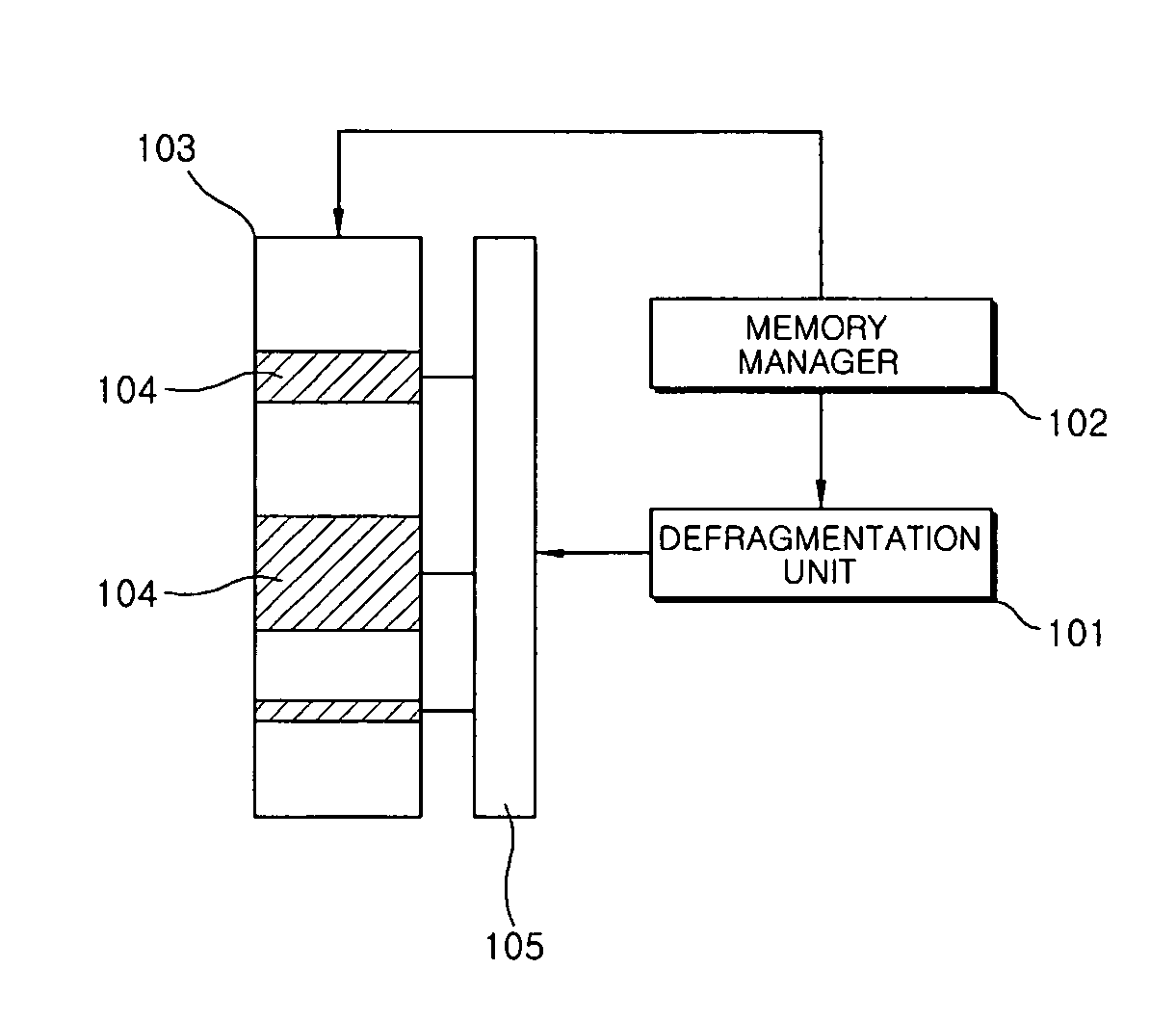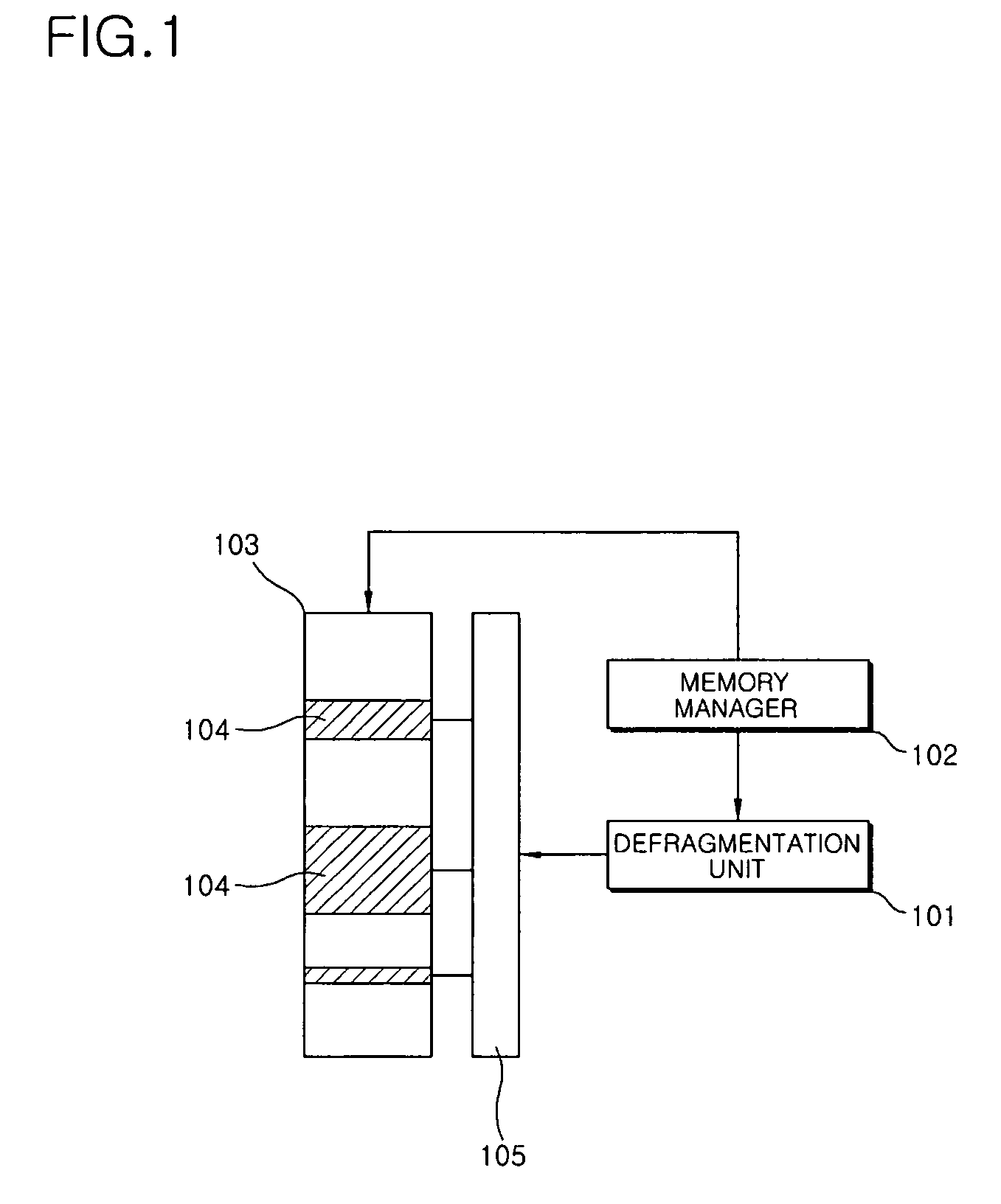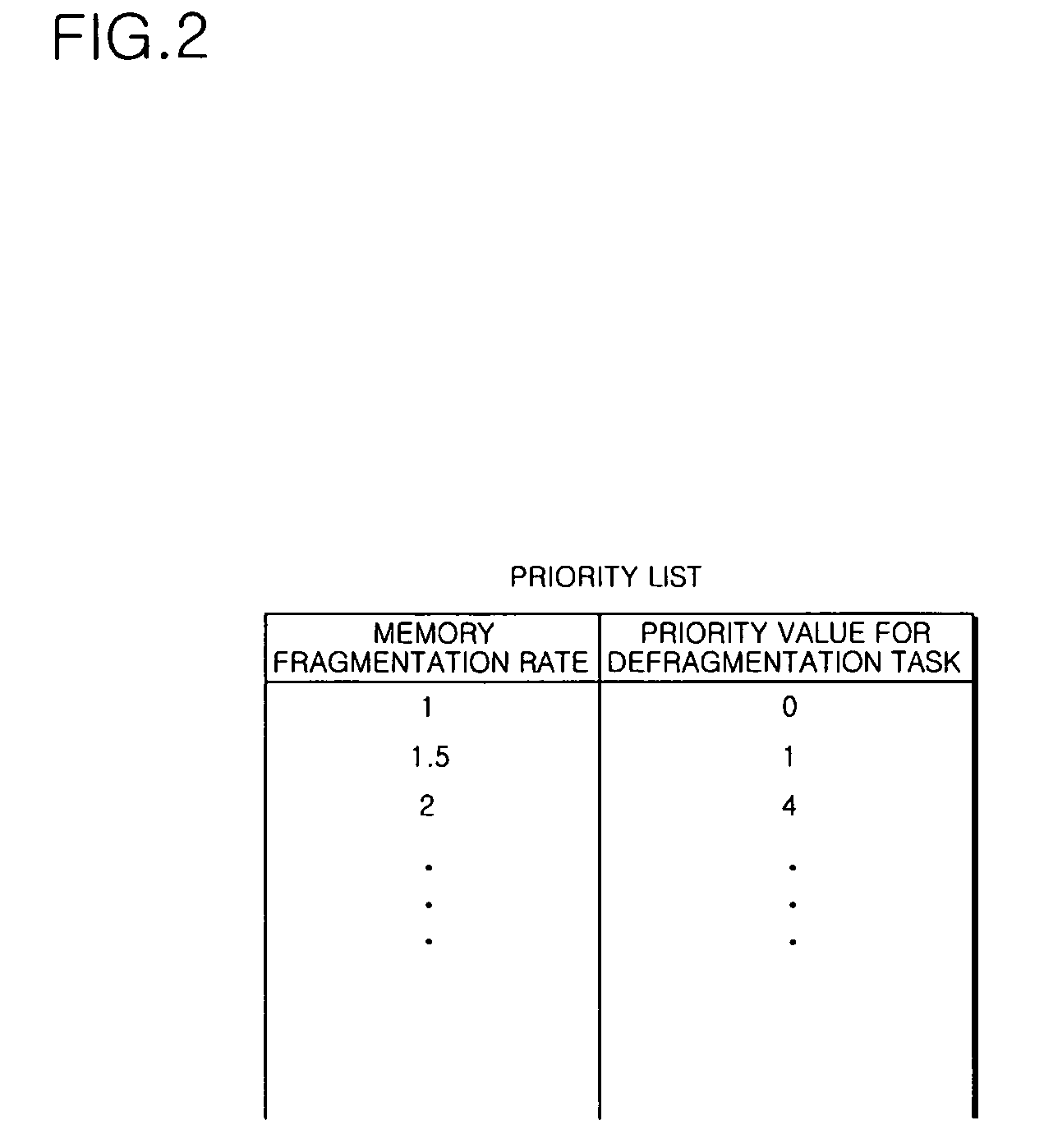Apparatus for managing memory in real-time embedded system and method of allocating, deallocating and managing memory in real-time embedded system
a real-time embedded system and memory management technology, applied in the direction of instruments, computing, electric digital data processing, etc., can solve the problems of system only being used after the data is reorganized, garbage collection cannot be adapted to a real-time system, and the method is not suitable for memory-consuming tasks or multitasking systems requiring real-time processing
- Summary
- Abstract
- Description
- Claims
- Application Information
AI Technical Summary
Problems solved by technology
Method used
Image
Examples
Embodiment Construction
[0023]Reference will now be made in detail to embodiments, examples of which are illustrated in the accompanying drawings, wherein like reference numerals refer to like elements throughout. In this regard, embodiments of the present invention may be embodied in many different forms and should not be construed as being limited to embodiments set forth herein. Accordingly, embodiments are merely described below, by referring to the figures, to explain aspects of the present invention.
[0024]FIG. 1 is a block diagram of a memory management apparatus of a real-time embedded system, according to an embodiment of the present invention.
[0025]The memory management apparatus includes a defragmentation unit 101 and a memory manager 102.
[0026]The defragmentation unit 101 is configured to perform a defragmentation task according to a priority. The defragmentation task is a process that reduces the amount of fragmentation in a memory 103 to create larger regions of free space by collecting togeth...
PUM
 Login to View More
Login to View More Abstract
Description
Claims
Application Information
 Login to View More
Login to View More - R&D
- Intellectual Property
- Life Sciences
- Materials
- Tech Scout
- Unparalleled Data Quality
- Higher Quality Content
- 60% Fewer Hallucinations
Browse by: Latest US Patents, China's latest patents, Technical Efficacy Thesaurus, Application Domain, Technology Topic, Popular Technical Reports.
© 2025 PatSnap. All rights reserved.Legal|Privacy policy|Modern Slavery Act Transparency Statement|Sitemap|About US| Contact US: help@patsnap.com



